Finding yourself locked out because of a jammed door can be a frustrating experience. It’s a common problem that can disrupt your day and cause a great deal of stress. Fortunately, with the right approach and a few basic tools, you can often resolve the issue on your own without needing to call for expensive professional help.
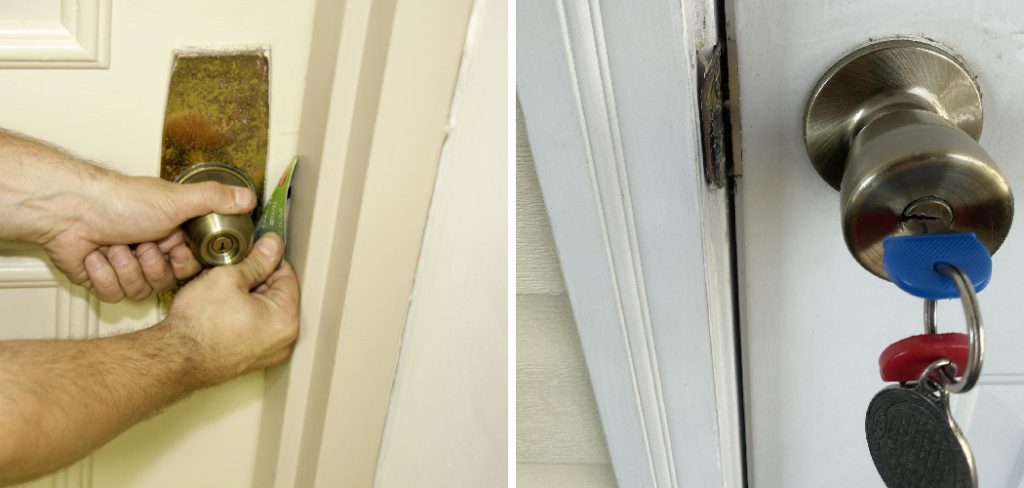
This guide on how to open a jammed door lock from the outside will walk you through the process of diagnosing the problem and applying simple techniques to get your door open. Understanding these methods can save you time and money, turning a potential crisis into a manageable task. Let’s explore the steps to get you back inside safely.
Tools and Materials You’ll Need
- Graphite or Silicone-based Lubricant Spray
- Credit Card or Plastic Putty Knife
- Screwdriver Set
- Hammer or Rubber Mallet
- Paperclip or Bobby Pin
- Pliers
8 Step-by-step Guidelines on How to Open a Jammed Door Lock From the Outside
Step 1: Assess the Lock and Key
Before attempting any forceful methods, take a moment to carefully examine both the lock and your key. Look for any visible signs of damage, such as a bent key or obstructions lodged inside the keyhole. Sometimes, the problem is as simple as a small piece of debris preventing the key from fully inserting. Try wiggling the key gently to see if you can dislodge anything that might be causing the jam.
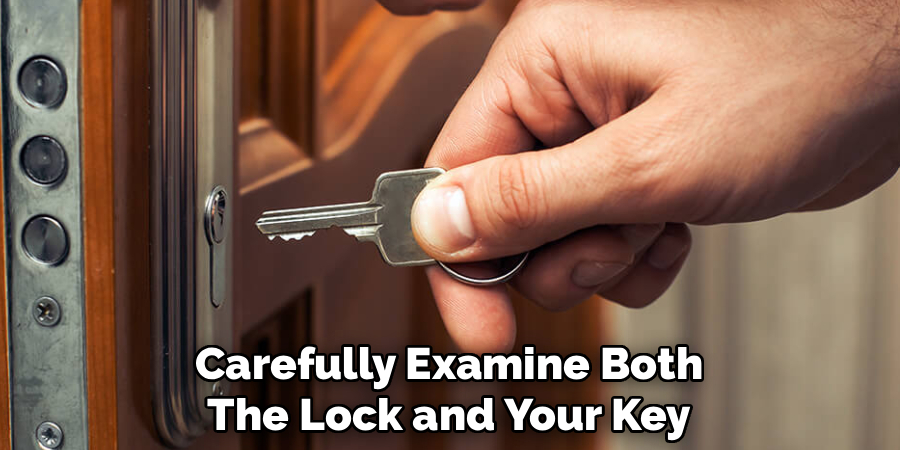
If you have a spare key, try using it as well. This helps determine if the issue is with the key itself or the internal mechanism of the lock. If the spare key also fails to turn, the problem is almost certainly within the lock. This initial assessment is crucial because it informs which of the following steps will be most effective for your specific situation.
Step 2: Lubricate the Lock
One of the most common reasons for a jammed lock is a lack of lubrication, which causes the internal pins and springs to stick. A quick spray of a graphite or silicone-based lubricant directly into the keyhole can often solve the problem instantly. Avoid using oil-based products like WD-40, as they can attract dust and dirt over time, making the problem worse in the long run.
After applying the lubricant, insert your key and gently wiggle it back and forth several times. This action helps to distribute the lubricant throughout the lock’s internal components, freeing up any stuck pins. Try turning the key again. You may need to repeat this process a couple of times to work the lubricant into all the necessary parts, but it is a highly effective and non-destructive first step.
Step 3: Check for Latch Misalignment
Sometimes the issue isn’t with the lock mechanism but with the latch bolt not aligning correctly with the strike plate on the doorframe. This can happen due to changes in humidity, causing the door to swell, or the house settling over time. Press your shoulder against the door while simultaneously trying to turn the key. This pressure can help realign the latch, allowing the bolt to retract properly.
You can also try pulling or lifting the doorknob as you turn the key. Shifting the door’s position within its frame, even by a small amount, can relieve the pressure on the latch bolt. If you hear a click or feel the lock give way while doing this, you have likely found the source of the problem. This method is particularly useful for doors that tend to stick seasonally.
Step 4: Use the Credit Card Method for Spring Bolts
This classic trick works on doors with a spring-latch mechanism, which is common for interior doors but also found on some exterior ones without a deadbolt engaged. Slide a sturdy, flexible plastic card, like a credit card or a plastic putty knife, into the gap between the door and the frame. Push the card in at a slight angle, aiming for the spot where the latch bolt is located.
As you push the card in, you will feel it hit the angled edge of the latch. Wiggle the card while applying pressure to force the latch back into the door, effectively retracting it from the strike plate. You may need to lean against the door while doing this to create a small gap for the card to work. This method requires a bit of finesse but is a great way to open a door without damaging the lock.
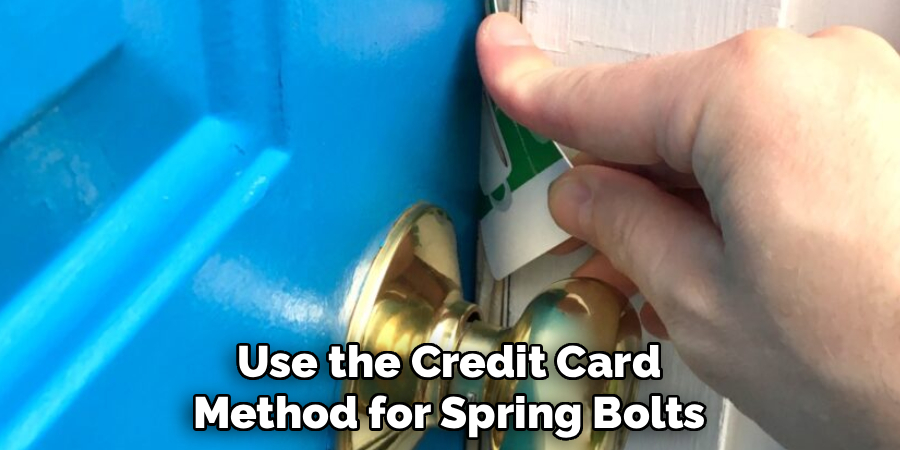
Step 5: Gently Tap the Lock
If lubrication and wiggling don’t work, the internal pins might be seized more stubbornly. A bit of light vibration can sometimes be enough to jostle them back into place. Using a hammer or a rubber mallet, gently tap the area around the lock on the door itself. Be careful not to hit the lock cylinder directly, as you could cause more damage. The goal is to create vibrations that travel through the door and into the lock mechanism.
While tapping, maintain gentle turning pressure on the key. This combination of vibration and torque can be surprisingly effective at freeing stuck components. Work your way around the lock, tapping lightly on different spots. This technique should be used with caution; excessive force can dent your door or break the lock, so always start with gentle taps and increase the force gradually if needed.
Step 6: Tighten or Loosen Lockset Screws
A loose lockset can cause misalignment of the internal parts, leading to a jam. Check the screws on the interior and exterior faceplates of your doorknob or handle. If they are loose, use a screwdriver to tighten them. This can sometimes be enough to realign the cylinder and allow the key to turn smoothly. Ensure the lockset is snug against the door but avoid over-tightening, as this can also cause binding.
Conversely, if the lockset is too tight, it can put excessive pressure on the lock mechanism. Try slightly loosening the screws to relieve this pressure. After adjusting the screws, attempt to turn the key again. Finding the right balance of tightness is key, as either extreme can prevent the lock from functioning correctly. This simple adjustment often resolves jams caused by recent installations or temperature fluctuations.
Step 7: Apply Pressure to the Door
Similar to checking for latch misalignment, applying consistent pressure to different parts of the door can sometimes get it open. The jam could be caused by the door itself pressing against the frame, which puts the bolt in a bind. Use your body weight to push on the door near the top, bottom, and side edges while trying to turn the key. This can shift the door just enough to free the jammed bolt.
You can also try lifting up on the doorknob or handle to take weight off the latch or deadbolt. This is especially helpful if the door hinges have sagged over time. Combining these pushing and lifting motions can help you find the sweet spot where the pressure on the lock mechanism is released. It’s a simple but often overlooked technique that costs nothing and carries no risk of damage.
Step 8: Probe the Lock for Obstructions
If you suspect a foreign object is lodged inside the keyway, you can try to remove it using a thin, sturdy piece of metal. A straightened paperclip or a bobby pin can work well for this purpose. Carefully insert the tool into the keyhole and gently probe around to feel for any obstructions. The goal is to hook onto the object and carefully pull it out.
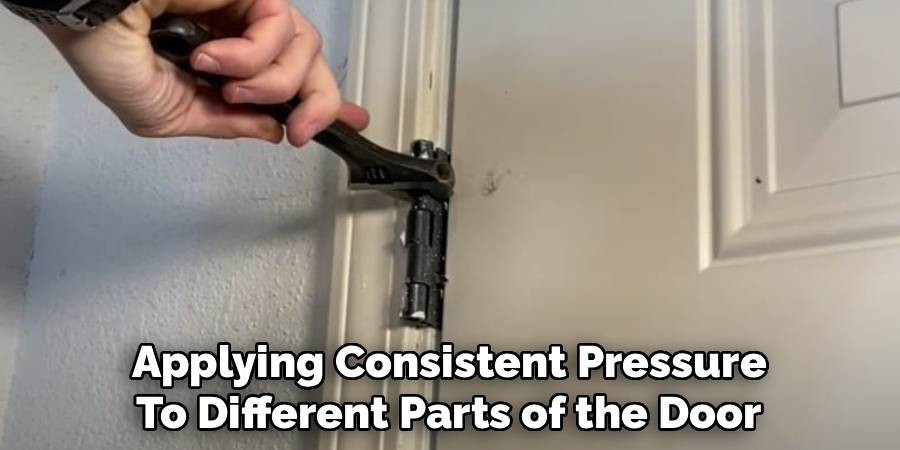
Be extremely gentle during this process to avoid pushing the obstruction deeper into the lock or damaging the delicate pins inside. If you manage to pull something out, try your key again. If the blockage is too deep or you are unable to remove it without force, it is best to stop and call a professional. This method requires patience and a delicate touch to be successful.
Following these steps on how to open a jammed door lock from the outside can save you time and frustration. However, it is always best to consult a locksmith if you are unsure or uncomfortable with attempting these methods. They have the proper tools and expertise to handle any type of door lock emergency.
Frequently Asked Questions
Q1: What Is The Best Lubricant For A Jammed Lock?
A1: The best lubricants for locks are graphite-based or silicone-based sprays. Graphite is a dry lubricant that won’t attract dust or gum up the internal mechanisms.
Silicone spray is also effective at reducing friction without leaving a sticky residue. It’s important to avoid using oil-based products like WD-40, as they can collect dirt and grime over time, which can eventually worsen the problem and make the lock even harder to operate.
Q2: Can A Jammed Lock Be A Sign Of A Burglary Attempt?
A2: Yes, a jammed lock can sometimes be an indication of an attempted break-in. Look for signs of tampering, such as scratches around the keyhole, a bent door frame, or damage to the lock itself. If you suspect that someone has tried to force the lock, it’s best to contact the police before attempting to fix it yourself. After ensuring your safety, call a locksmith to repair or replace the compromised lock to secure your home.
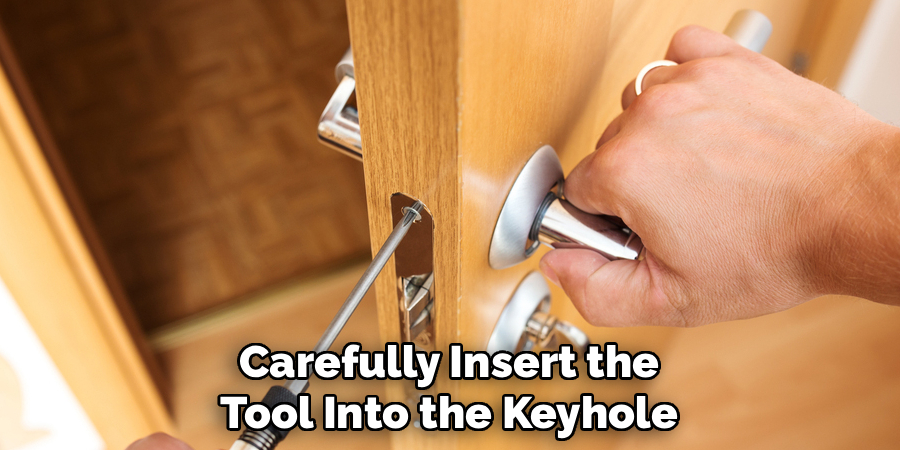
Q3: How Can I Prevent My Door Lock From Jamming In The Future?
A3: Regular maintenance is the key to preventing lock jams. Lubricate your locks with a graphite or silicone spray at least once a year to keep the internal components moving smoothly. Periodically check and tighten the screws on your lockset and strike plate to ensure everything remains properly aligned. Also, make sure your door is not sagging or swelling, as this can put pressure on the latch and cause it to bind.
Conclusion
Being locked out by a jammed door is an inconvenient but often fixable problem. By systematically assessing the situation and trying simple solutions like lubrication, checking for alignment issues, and applying gentle pressure, you can often get your door open without needing to call a professional. Knowing these techniques provides peace of mind and empowers you to handle the situation calmly and effectively.
However, it’s also important to recognize when a problem is beyond your skill set and requires the expertise of a locksmith. Regular maintenance is the best strategy to ensure your locks function correctly and keep your home secure. Thanks for reading this guide on how to open a jammed door lock from the outside.
About
Safety Fic is a distinguished figure in the world of Diy design, with a decade of expertise creating innovative and sustainable Diy solutions. His professional focus lies in merging traditional craftsmanship with modern manufacturing techniques, fostering designs that are both practical and environmentally conscious. As the author of diy, Safety Fic delves into the art and science of Safety Fic-making, inspiring artisans and industry professionals alike.
Education RMIT University
(Melbourne, Australia) Associate Degree in Design (Safety Fic) Focus on sustainable design, industry-driven projects, and practical craftsmanship. Gained hands-on experience with traditional and digital manufacturing tools, such as CAD and CNC software.
Nottingham Trent University
(United Kingdom) Bachelor’s in diyfastly.com and Product Design (Honors) Specialized in product design with a focus on blending creativity with production techniques. Participated in industry projects, working with companies like John Lewis and Vitsoe to gain real-world insights.
Publications and Impact
In diy, Safety Fic his insights on indoor design processes, materials, and strategies for efficient production. His writing bridges the gap between artisan knowledge and modern industry needs, making it a must-read for both budding designers and seasoned professionals.
